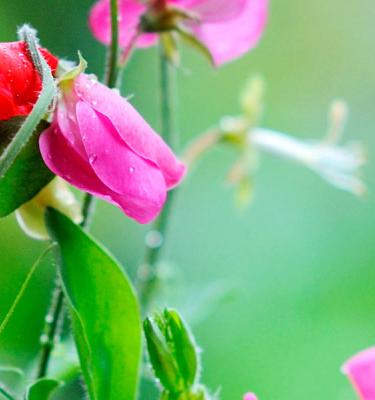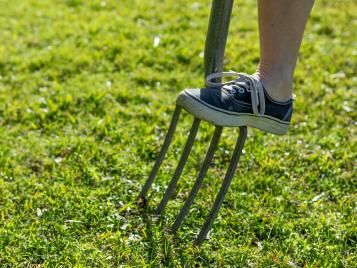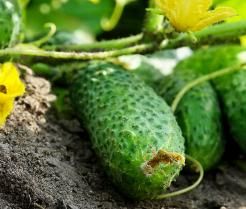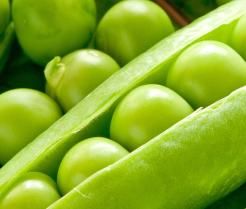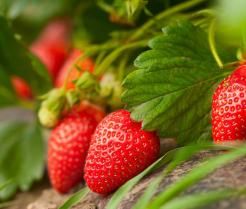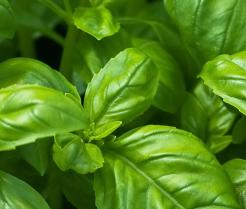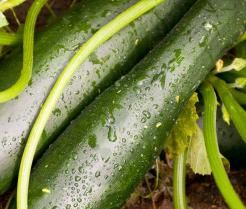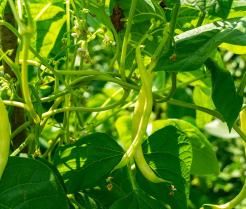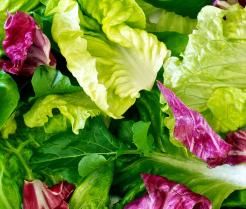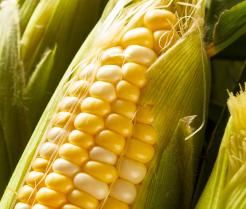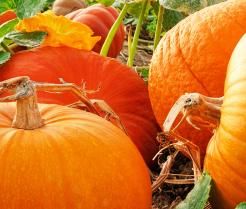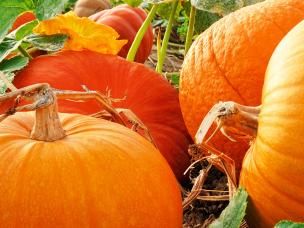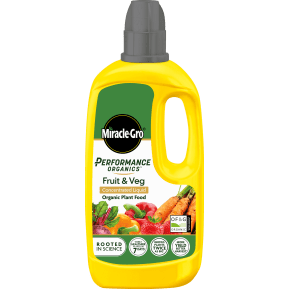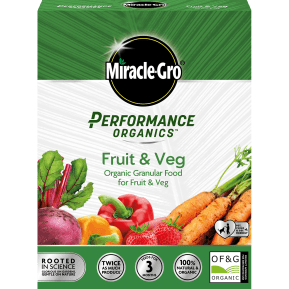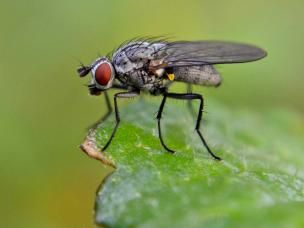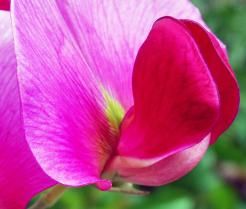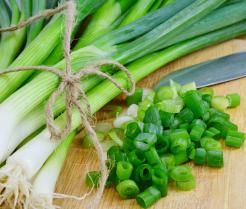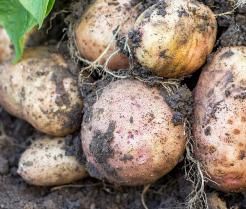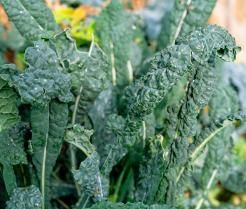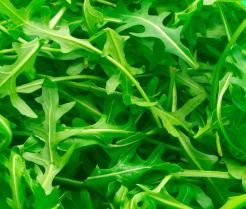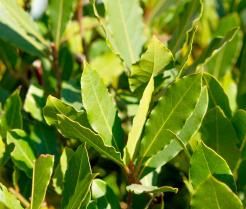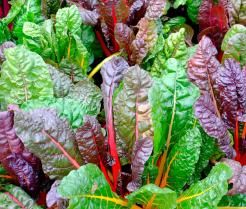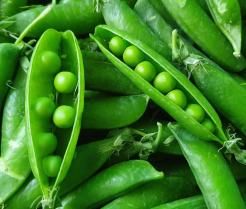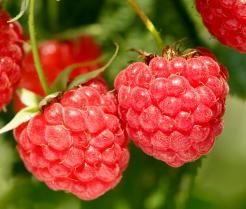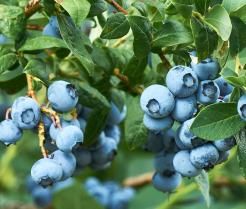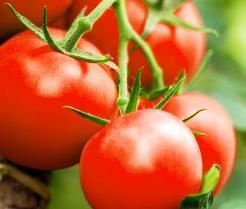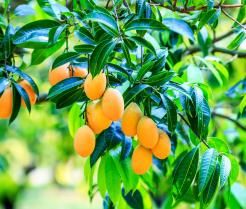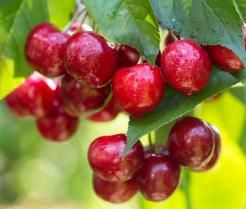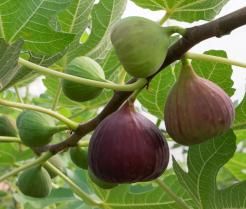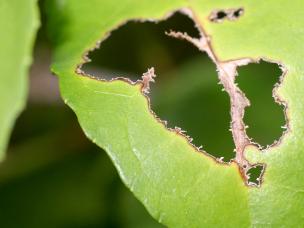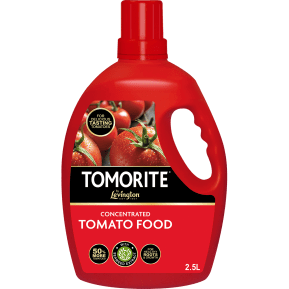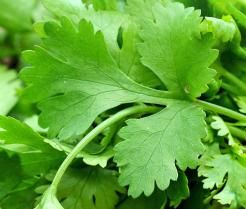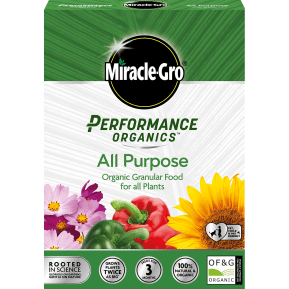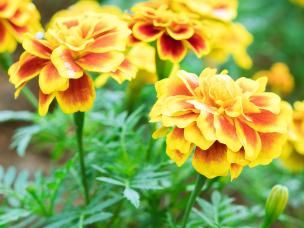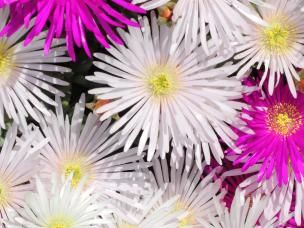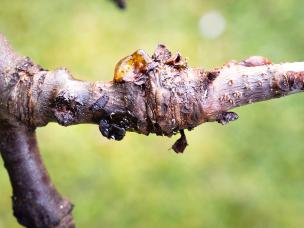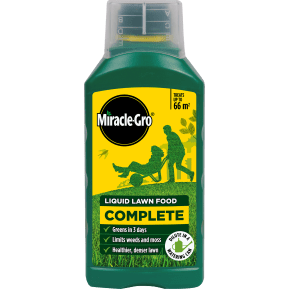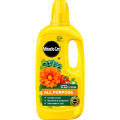June Gardening: Your Monthly Garden Guide
June is the first proper month of summer and a great opportunity to get out into the garden and enjoy the results of all the hard work you put in earlier in the year. Of course, there are still some essential jobs to complete if the summer is going to be a blooming success. And yes, if that green thumb is getting itchy and you find yourself wondering what to grow in June, you’ll be pleased to know that there are plenty of options.
What to plant in June and other June gardening tips
June is a month of barbecues, socialising outside and enjoying your green space, but we understand that it’s hard for a gardener to put down their tools completely! Whether you want to know what to plant in June, which fruit and vegetables to sow (or harvest), or the flowers to pot, choose your favourite category below and check out our essential June gardening tips.
This month is ideal for planting a wide variety of fruit, vegetables, herbs and spices – or for moving them outside if you’ve already started growing them indoors. You’ll have no shortage of choice for what to grow in June. Keep an eye on the weather, though. If we have a particularly hot, dry month, you’ll need to water any newly planted seedlings regularly for the best chance of success. You’ll find that a lot of your vegetables and herbs will be flourishing in the sunny weather, so when you’re not planting new crops, you’ll be thinning your plants and keeping an eye out for any pests that might be ravishing your fruit trees.
Vegetables
June is an exceptionally busy time of year in the vegetable patch. Whether you’re wondering what vegetables to plant in June, looking to harvest your flourishing crop, or just want to keep your vegetable garden ticking over, there’s plenty to keep you busy and enjoying your garden throughout the month.
What vegetables to plant in June
As the summer finally gets underway, the promise of long days and warm weather means this is one of the busiest times for planting vegetables. Put in the hard work now and you’ll continue to see the benefits across the next year.
The following vegetables can all be sown outdoors directly into well-prepared soil (containers, beds and borders will all work, whether in a garden or on a balcony). If you've already sown these indoors and they've sprouted, now’s the time to move them outside, provided the weather is good. If not, keep them inside until the next warm, sunny spell.
Plant seedlings of the following
Remember to sow fast-maturing vegetables, such as salads, every 10-14 days to ensure a continuous supply.
Meanwhile, if you’re already looking ahead to those pumpkin stews in October, you can sow your pumpkin seeds indoors in a greenhouse, conservatory or even on a windowsill.
Consider using a peat-free compost specially formulated for growing fruit and vegetables. This can keep your seeds fed for up to six weeks, providing a nurturing bed for them to put down strong roots.
Growing vegetables in June
June is typically when the weather starts getting really hot and dry, so make sure your vegetables get a good drink of water during dry spells. Try to give them an intermittent, thorough soaking rather than a light spray every few days and remember to water them early in the day so that the soil soaks up the water before the sun has a chance to dry it out.
The other primary focus for June is going to be thinning, planting out, and transplanting vegetables to their final locations. Start with tender crops such as lettuce, and use brassica collars when planting out cabbages, as this will help prevent cabbage root fly. If you’re thinning out carrots, always make sure that the soil around the remaining plants is firm and be sure to dispose of the plants you’ve thinned out, as this will deter carrot root flies.
Monitor sweet peas and other climbers, tying them into supports where needed to ensure they don’t flop and break their stems. Continue tying in runner beans.
June is usually the time of year we finish earthing up our main crop of potatoes, so make sure to do this if you haven’t already.
Finally, as we come towards the end of the month, shallots planted in spring may begin to swell. You should scrape away the soil from the necks of the bulbs. This will ensure they are exposed to warmth and light.
What vegetables to harvest in June
If you’ve already been busy in your vegetable garden this year and you have plenty of crops growing, you’ll be in for a large harvest in June, so make sure you brush up on your favourite recipes. The vegetables usually ready to harvest in June are:
Fruit
When considering what fruits to plant in June, it’s very much all about the big names of the home gardening world – tomatoes and strawberries. You can also do a little bit of fruit picking in June, but this month is mainly going to be about care and maintenance.
What fruit to plant in June
Whether bought from a shop or garden centre, or raised yourself, June is the perfect time to plant out your young plants. You can plant the following fruits directly into your garden in June:
If you still have crop left over from May, you can continue picking rhubarb, but make sure you stop at the end of June to give the plants time to build up their strength for next year.
Growing fruit in June
It’s important to make sure you’re protecting your fruit garden from the local wildlife in June, as their activity tends to increase with the arrival of summer. Cover soft fruits with netting to protect them from birds and squirrels, and consider slug control as our slimy friends can pose a threat to newly planted seedlings.
June is also a great time to begin pruning your plum and cherry trees. This is generally a good opportunity to check all of your fruit trees for shot hole and any suckers growing around the base of your trees – these can be removed by hand.
Pears, plums, peaches and apricots can be thinned earlier in June, and apples at the end of the month.
Water any potted blueberries, cranberries and lingonberries with rainwater rather than tap water – the lime in tap water will reduce the acidity of the soil over time. You should also continue watering your tomatoes regularly to prevent blossom end rot. Feed any fruits that you’re growing in containers with a high potash liquid feed to keep them healthy.
What fruit to harvest in June
If you have any budding gardeners you’re looking to keep entertained, then fruit picking in June is a great activity for children, and the ideal month to start harvesting strawberries. You can pick and eat them straight from the plant or have them with cream just in time for Wimbledon at the end of the month.
Unripe gooseberries can be harvested in June to make tarts, jams and sauces. Pick around half of them, leaving the others to ripen for harvesting in July.
Herbs and spices
If you’re wondering what herbs to plant in June, you have quite a few options for some last-minute planting. Elsewhere, June is all about pruning and maintenance.
What to plant this month
You’ve just about got time to sow some herb seeds in June before the weather gets too hot. Plant any of the following:
June is also the ideal time to transplant any container-grown herbs, whether they’re freshly bought, or you’ve propagated and raised them yourself. This is a good opportunity to enrich your soil with some peat-free compost or organic plant food to ensure that your herbs take to the soil quickly and put down strong roots.
What to plant this month
This month is all about chopping back herbs to remove tired old leaves, which should stimulate the growth of fresh new ones in their place. You can do this to any of the following:
The likes of coriander, dill, basil and wild rocket can be quick to bolt when overcrowded or in poor and dry soil. With plenty of potential dry spells during June, make sure you water your herbs regularly and use a naturally derived liquid plant feed to give them a helping hand. Don’t forget to thin them out where required.
There are a few flowers that will take well to the soil in June but, for the most part, you’re likely to find that the time you spend in the garden this month is mostly focused on pruning your plants and thinning out your flowers. There’s plenty to be done, so make sure your tools are sharp and consider making a plan for the month before you start.
Flowers and bulbs
If you’re looking for flowers that can be planted in June, then your best bet is likely to be perennials, though it’s a good last chance to get some annual flowers in the ground. Elsewhere in your garden, take the opportunity to get on top of some pruning and general care and maintenance.
What flowers and bulbs to plant in June
If you find yourself wondering what flowers to plant in June, then don’t miss out on the last opportunity this year to flourish your garden with any of the following annual flowers:
-
Zinnias
-
Clarkias
-
Marigolds
-
Mexican marigolds
-
Pheasant's eyes
-
Morning glory
-
Cosmos
-
Lavatera
It’s also the perfect time to dig in your summer flowering bulbs, originally sown in April. These might include:
-
Begonias
-
Dahlia
-
Gladioli
-
Lilies
-
Peonies
-
Crocosmias
Growing flowers and bulbs in June
Now is a great time of year to plant up some containers and hanging baskets for a summer full of brilliant colour. You can use summer bedding and patio plants but remember to check that any hanging baskets will hold their own weight once fully watered. Container plants should be watered regularly – on a daily basis during dry spells. You may wish to consider using a peat-free moisture control compost specifically designed for pots and baskets. This will provide the optimum structure for plants to grow strong roots, controlling the water availability and providing nutrients for up to three months.
Now that the final traces of spring are receding, cut back the old leaves of spring-flowering perennials, such as Doronicum and Pulmonaria, for a fresh flush of new, healthy foliage.
Lift and divide overcrowded clumps of bulbs, and thin out drifts of hardy annuals if they’re becoming overcrowded.
June is the best time of year to cut back delphiniums. Do this right to the ground and remove the leaves as well as the flowers. Doing this now may give you a second round of flowers in August and September.
Deadhead and cut back oriental poppies once they have flowered. If you cut them close to ground level it will stimulate new foliage, a quick snip with secateurs is always effective. Feed and mulch them and give them a good watering.
Sedums can be pruned back. Cut the stems by around a third to stop them from flopping outwards.
Finally, your hardy geraniums will likely have finished flowering by the end of June. When they have, cut them back to encourage new flowers and foliage.
Plants and shrubs
If you’re wondering what plants can be planted in June, then your time may be better spent taking a break from planting and focusing on the care and maintenance of your established flowerbeds. The weather conditions in June are generally not ideal for planting shrubs, but there’s plenty to be done elsewhere!
What plants and shrubs to grow in June
If June is hot and there isn’t much in the way of rainfall, planting new trees and shrubs is best avoided. It may be a better choice to wait until autumn, when the weather offers better conditions for planting.
Growing plants and shrubs in June
If you were hoping to spend some serious time in the garden this month then you’ll be pleased to learn that, although there’s not much you can plant, there is plenty of maintenance that needs to be done. Start by watering any recently planted trees and shrubs with rainwater or recycled water – you can use a garden water butt to collect rainwater during wetter periods.
Your plants will likely be growing rapidly at this time of year, so check for any tree ties that are digging into the bark. Loosen any that you find, and also check for those that may dig in once the trunk girth expands – loosen them now or make a note to do so later in the year.
It’s also a good time of year to check for any damage, caused either by disease or pests. Look out for damage on deciduous trees, including bacterial canker, and check for signs of blight on box and holly trees. Finally, you should check all of your plants and shrubs for caterpillars, aphids and other pests. Implement effective control and treatment.
Once you’ve done that, it’s time to get pruning, and there is plenty to prune! Evergreen hedges will need to be trimmed right down to the base to keep the growth dense, while any wall-grown shrubs that have finished flowering will also need pruning.
Early flowering shrubs – such as Ceanothus and Chaenomeles – should be pruned to within 10cm (2 – 4 inches) of the old wood. It’s also a good time to thin out any early flowering clematis that are overcrowding their neighbours, but you shouldn’t need to do this every year.
Lilacs, azaleas, and rhododendrons can all be deadheaded as they finish flowering. This will keep them healthy and strong, as well as tidying up your garden. Opt for a light pruning as you can give them a more severe pruning the following year in early spring. It’s also worth using a naturally formulated plant feed specially formulated for acid-loving plants to make sure they’re getting the nutrients they need.
Finally, pinch out the tips of fuchsias to encourage further growth later in summer.
Lawn care for June is essential as we’ll be transitioning into the drier months when your grass can often need a little bit of a helping hand. Make sure you have a regular mowing and watering regimen in place and, with your lawn likely getting more use this month, keep an eye out for any repairs that might be needed.
June lawn care
Mow your lawn about once a week, aiming to maintain a grass height of around 2.5cm (1 inch). Avoid cutting it any shorter than this, as this will encourage weeds and moss – don’t forget to collect and compost all cuttings.
Watering your lawn in June
Watering your lawn regularly is a crucial part of your June lawn care routine. When the weather is dry, you should give your lawn a good soaking once or twice a week. Try to avoid giving it a light daily sprinkling as this can cause the roots to grow shallow and become prone to drying out. You should also water it either early in the morning or late in the evening to ensure the water has a better chance of soaking into the soil before the sun can dry it out. Spiking will also help water penetrate the soil.
While watering your lawn, you should consider giving it a feed as well to encourage a stronger and deeper root system. A granular lawn feed will keep your entire lawn looking healthy while you can use a liquid feed to target any problem patches. There are plenty of garden hose attachments available that can speed this up and provide complete coverage.
Lawn treatment in June
If weeds are a problem in your lawn, apply a naturally derived selective lawn weed control, specially formulated to target your lawn weeds without harming the grass. If both weeds and moss are a problem, opt for a suitable 4 in 1 lawn care product.
Top tip: When it’s really hot, your lawn will become stressed. Reduce the amount of mowing and let the grass grow longer. You should also avoid applying any feed, as the grass will have slowed its growing process and may become scorched.
